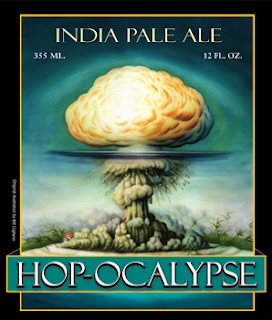Ambitious Brew: The Story of American Beer was written by Maureen Ogle, and published by Orlando - Harcourt
in 2006. It's a history of brewing, breweries and beer in America, focusing mainly on the period of 1840 to prohibition. There's very little information prior to the 1800s. There is a reasonable amount of writing, though, concerning the post-Prohibition period up to the craft beer revolution of the late 1980s/early 90s.
The book focuses mainly on the major German-heritage brewers in Milwaukee and St-Louis: Best (which became Pabst), Anhauser-Bush, Schlitz, and Miller. Not much is written about Schaefer, Rupert, Ehret and other East Coast brewing giants (and no mention of Frank Jones, a US Congressman brewer from New Hampshire from the 1800s!). But, honestly, there's plenty of interesting history on the Mid-West brewers to make a good read.
By the by -- why so little info on beer prior to the first American beer revolution of the mid-1800s? Probably because Americans were drinking rum, whiskey, and hard cider much more than beer during that period.
The book zeroes in on the transition from the muddy, rustic frontier ales and English imports of porter to the dark, rich, malty German lagers, introduced by a flood of German immigrants to the U.S. in the mid- and late-1800s. Though not quite brilliant pale pilsners at that point, those hefty lagers were much cleaner and consistent than the beer that preceded them in the saloon.
Ogle also paints the scene of first generation German/European immigrants trying to re-create the European tradition for enjoying beer -- a very social setting, with the whole family in tow, in a wholesome, airy, sunny garden-park. Drinking beer wasn't about getting wasted -- it was about sipping a clean, full-bodied lager in a biergarten, with beautifully manicured grounds, on a slow, relaxing Sunday afternoon. The low-alcohol drink was more a meal than a means of intoxication.
The history slides from dark German lagers toward the pale, crisp, lighter bodied Bohemian Pilsner style beers that followed, which were inspired by Czech beers from Pilzn and Budvar, that became all the rage at the end of the 1800s. There's also much explained about the struggles German-American brewers experienced with the negative association of Deutschland at the onset of WWI, and how prohibitionists used that to further their cause.
The book tracks the American transition from substantial German lagers to paler Pilsners to what currently passes as "American beer" by tracing brewing trends and public demands over the decades. There are a lot of surprising facts -- for example, when Anhauser-Bush started using rice in the late 1800s, it was actually more complicated and more expensive than if they were to use 100% barley malt. Apparently, rice was not used then to cut costs, but to achieve a paler, lighter body.
Ambitious Brew is a fantastic resource for getting a basic understanding of how early German-Amercian brewers shaped beer and brewing in America. There's also some intriguing insight into the topic of Prohibition -- how it came to pass, how the brewing industry (barely) survived it, its repeal, and the post-Prohibition period.
This book is a very easy and fast read for anyone with an interest in brewing history. It's a must-read for beer geeks and fans American history. In addition to the obvious brewing history knowledge laid out in the text, much is revealed about general American culture, politics and power, as viewed through the history of one of the largest, most influential and ubiquitous industries in the nation.
A copy of Ambitious Brew is available for borrowing from the New York Public Library. Both new and used copies can also be found at various on-line book sellers.
 [link to podcast page]
[link to podcast page]














































